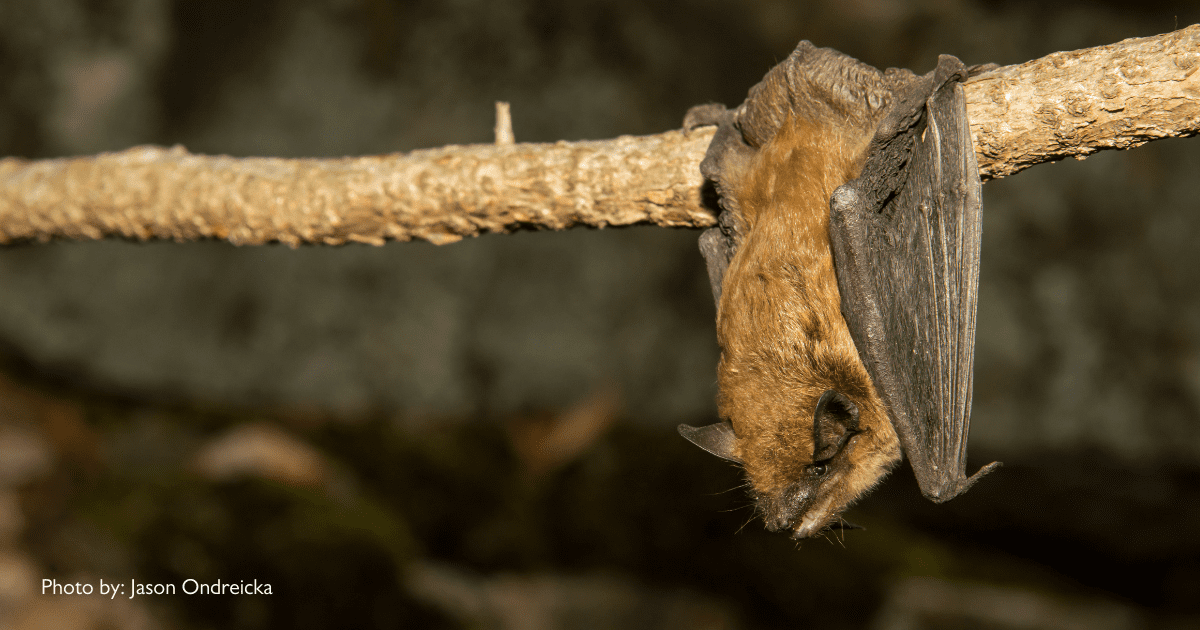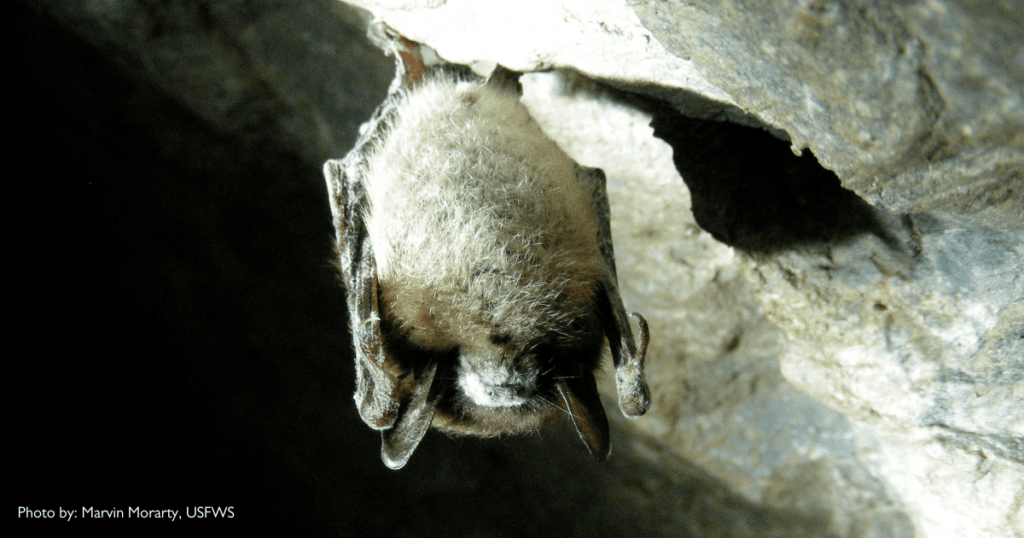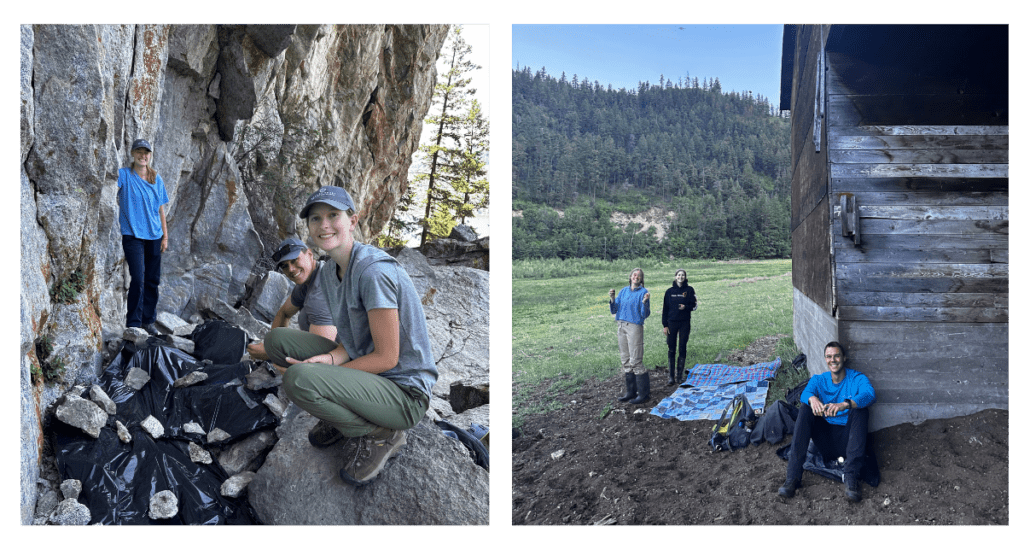
Bats are vital to Canada’s ecosystems, providing important ecological functions such as pest control and pollination. British Columbia is home to fifteen of the seventeen bat species found in Canada. Among these, half of the bat species in BC are currently at-risk. To make matters worse, the fungus that causes the deadly white-nose syndrome was detected for the first time in BC last April in Grand Forks, heightening threats to at-risk bats. Now more than ever, bats require conservation support to ensure their long-term resiliency.
The fungus that causes the fatal white-nose syndrome has killed millions of bats across North America. First discovered in 2006 on the East Coast of the United States, the fungus, Pseudogymnoascus destructans, has quickly spread across the continent and has led to at least three Canadian bat species being listed as Endangered federally.

A Little Brown Bat with the fungus that causes white-nose syndrome, from the US Fish and Wildlife Service
“The fungus that causes white-nose syndrome has potentially devastating implications for bat populations in BC,” said Alex Thomson, Okanagan Conservation Field Operations Technician with The Nature Trust of BC, “Essentially, the fungus affects bats’ hibernation. When infected, bats have to wake up and use their precious energy reserves to wipe the fungus off themselves. By the time they finish their hibernation, they are emaciated and close to death – the syndrome has a very low survival rate.”
Our Conservation Field Crews have supported the fight against white-nose syndrome by conducting bat counts at roosting sites, and collecting bat guano for testing to quickly detect destructive fungus in any bat colony. Within the Okanagan, Alex and his team has been conducting bat counts and guano collection at our White Lake Basin Biodiversity Ranch and Skaha Lake Eastside Conservation Area. These bat counts provide valuable data on current bat population sizes and identifying any population declines that may be linked to white-nose syndrome.

Left: The Okanagan Conservation Field Crew looking for bat guano to send to the lab for testing. Right: The Okanagan Conservation Field Crew conducts their first bat count of the 2023 season at Horn Lake barn.
Although it is unfortunate news that the fungus that causes white-nose syndrome arrived in BC this year, it was caught quickly, thanks to the ongoing, collaborative monitoring efforts of the province and conservation groups like The Nature Trust of BC. Conservationists in British Columbia have been on the lookout for the fatal fungus since 2016, when it was observed in Washington state. The discovery of the fungus in Grand Forks only makes monitoring efforts even more important. However, since there is no prevention or cure for white-nose syndrome, building resilient bat populations in BC through habitat protection is of the utmost importance.
“Bats in British Columbia face so many risks already – land development, urbanization, and agriculture have already taken up so much of their habitat,” said Thomson, “With the addition of white-nose syndrome to the ever-growing list of threats to BC bats, it’s even more important to make sure that we work together to protect their habitat.”
How can you help protect BC bats?
Working together, we can sustain healthy and resilient bat populations in British Columbia. There are many ways to help BC Bats:
- Donate: The best way to help bats thrive is by ensuring their habitat is protected forever. Donations large and small can impact the fifteen bat species that call British Columbia home. Donate here.
- Report Bat Roosting Sites: Do you know the location of a bat roosting site, or do you have bats on your property? Report the sites to the BC Community Bat Program here.
- Report Unusual Bat Behaviour or Dead Bat Observations: If you see a bat exhibiting unusual behaviour, like flying during the day, or see a sick, injured, or dead bat, please report your findings to the BC Community Bat Program here.
- Clean your Gear: Although the fungus that causes white-nose syndrome is primarily spread through bat-to-bat contact, the fungus can travel on our clothes and gear. Make sure to take extra care to clean your gear and clothing to avoid spreading the fungus associated with white-nose syndrome!
 Written by Dominique Bowden, Digital Engagement Coordinator
Written by Dominique Bowden, Digital Engagement Coordinator

